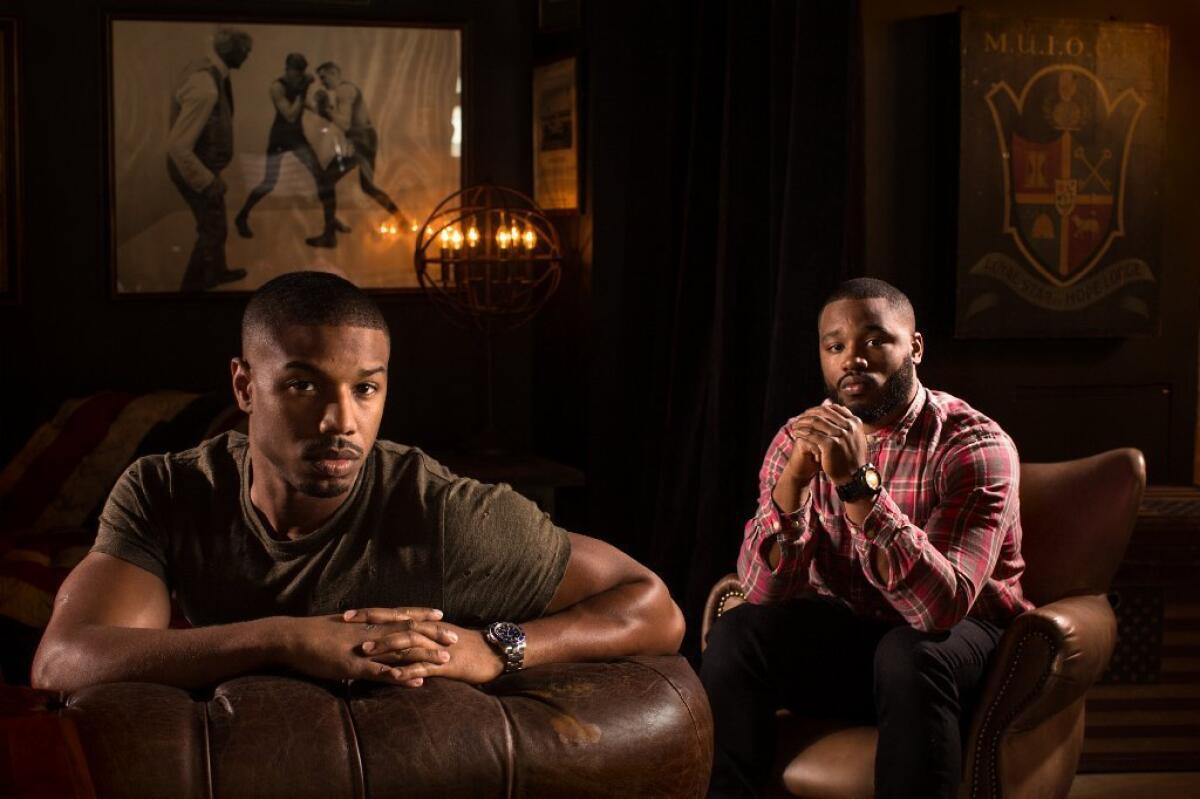What the academy’s new diverse class will mean for Oscar voting — will it change anything?

- Share via
It’s a first step. And an exceptional one, provided it’s not the only one.
Moving to broaden its ranks by inviting 683 people to join as members, nearly half of them women and 41% of them people of color, the film academy has made good on its promise to create, over the next four years, a substantially different, more inclusive institution.
This initial, historic stride might already be enough in itself to shake up next year’s Oscars. A potential 10% membership boost – from 6,261 voting members to nearly 7,000 -- couldn’t help but have some effect.
The depth of that effect, though, is open to question. It’s important to remember that even with this enormous class, the academy remains overwhelmingly white (89%) and male (73%). The needle barely moved for women and people of color.
“I don’t think this change alone will make that much difference at the Oscars this year,” said Darnell Hunt, professor of sociology and director of the Ralph J. Bunche Center for African American Studies at UCLA.
“It’s an important action. And these new members will be open to different kinds of movies, films that the status quo might not have been as interested in or received in the same way. But it still boils down to basic math. If the preexisting membership remains the same, just adding new people isn’t going to change things dramatically.”
One academy group, however, is achieving dramatic change. Take a look at the 94 directors invited to join what was a relatively small branch of 394 members, a branch that was, according to a 2016 Times analysis, 91% male and 89% white.
The 94 invited directors include 54 women -- a staggering reversal of that gender inequity -- as well as filmmakers from every corner of the globe. Many of the names on the list – Lucrecia Martel, Xavier Dolan, Park Chan-wook, Hou Hsiao-Hsien – may not be familiar to multiplex moviegoers. But these directors are responsible for some of the most challenging, rewarding films of the 21st century. Admitting them to the academy is thrilling.
5 burning questions raised by the largest academy invitee class »
Add accomplished Americans like Ryan Coogler (“Creed”) and Cary Fukunaga (“Beasts of No Nation”) and, literally, overnight, the directors branch has changed its dynamics, making it more representative and a lot more interesting.
“I was happy to see the emphasis on diversity in the new class,” said “The Big Short” filmmaker Adam McKay, who was invited by both the directors and writers branches. “Always good when old institutions make the effort.”
Will it make the Oscars less white? Maybe. Maybe not. But the influx of these filmmakers, part of a group of 283 newly minted international academy invitees, makes it more likely that the Oscars might recognize world cinema in a more meaningful way. That’s a good thing, particularly as American movie studios are more interested these days in franchise maintenance than singular storytelling.
It shows the tremendous will of a lot of people to be more inclusive.
— Laura Karpman
Some small-picture people have griped that the academy has lowered its standards by embracing so many new members at once. Tina Fey and Anthony Anderson, they complain, are more TV than film, despite “Mean Girls” and “Hustle & Flow.” Vivica A. Fox? (Um … “Kill Bill’s” Vernita Green?) The Wayans? Really? How dare they invite these … these … comedians into such an exalted institution?
Those parsing the list appear to have little memory or knowledge of the way many current members were brought into the academy under what might be called the friends-and-family plan. Actors holding résumés loaded with TV credits – John Mahoney, Robert Walden, Ron Masak, Billy Mumy, Carole Wells … it’s a long list – have gained entrance throughout the academy’s history, particularly in the 1970s and ’80s. And there have been head-scratching invitations every single year.
Funny thing about all that, though: No one complained.
So the academy righting decades of wrongs by being more inclusive isn’t ignoring standards. You can’t ignore something that has never been anything but malleable in the first place.
Better to spend your time thinking about academy members like composer Laura Karpman, a committee rep who helped bring in the 26 new music branch invitees this year. Of the 26, 12 are women, 10 are people of color.
Why does that matter? Prior to this year’s class, music branch membership was 93% white and 92% male.
“I am sitting here weeping,” Karpman told The Times over the phone. “I am so moved by this. For the music branch in particular, it is a historic day.
“It shows the tremendous will of a lot of people to be more inclusive. It indicates that people do want change. They’re voting for it. They’re voting in members who have the credits and deserve the honor.”
Look again at the numbers. That’s a transformation. Or the beginning of one, anyway. Hopefully.
MORE ENTERTAINMENT NEWS
Commentary: Why the academy’s focus on international writers and directors matters
The film academy’s 2016 class: An exclusive club gets much bigger after #OscarsSoWhite
Here are all 683 people invited to join the academy
More to Read
Only good movies
Get the Indie Focus newsletter, Mark Olsen's weekly guide to the world of cinema.
You may occasionally receive promotional content from the Los Angeles Times.











